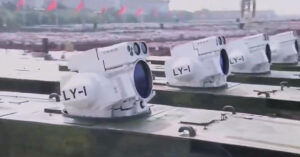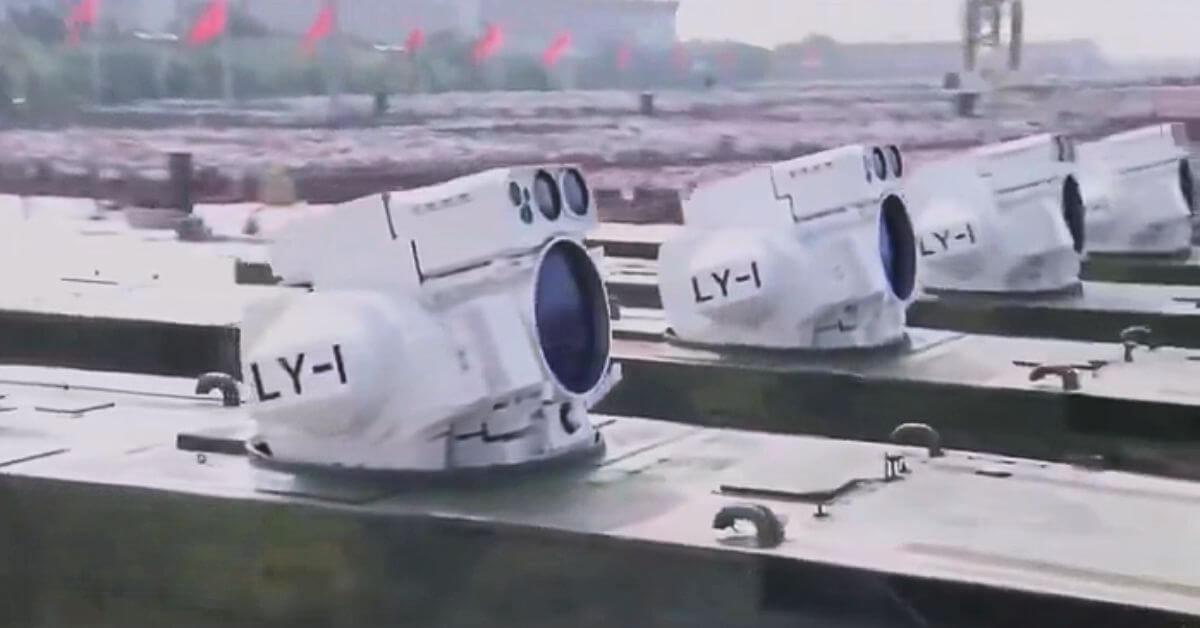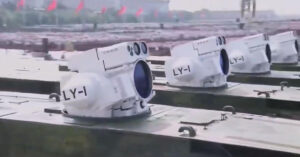
Grounded Fishing Vessel Spills 3,500 Gallons Of Diesel Near Alaska’s Kodiak
September 5, 2025
Armed Men Attack Greek-Owned Container Ship Off Portugal
September 5, 2025

China has officially revealed a large directed energy laser weapon called the LY-1 during a massive military parade in Beijing. The event marked the 80th anniversary of the Republic of China’s victory over Japan in World War II.
While the laser has been developed mainly for shipboard defense, the version shown at the parade was mounted on an eight-wheeled truck, signaling that land-based use is also under consideration.
The system has a single large circular beam aperture, along with multiple smaller apertures believed to be linked to electro-optical or infrared cameras for target tracking. A box-like structure on one side may contain other sensors, possibly radar or radio-frequency receivers.
Parade commentators described it as “strongly capable of precision disruption and persistent strike.” State media outlet Global Times reported that the laser can damage optical sensors, and because naval vessels can provide enough power supply, the LY-1 could be scaled up to intercept not just drones and unmanned vehicles but also anti-ship missiles, with each interception costing very little.
Touted as the “world’s most powerful,” China’s LY-1 ship-based laser air defense system was displayed on an eight-wheeled truck, with no specs released. pic.twitter.com/WalkQffaA9
— Polymarket Intel (@PolymarketIntel) September 3, 2025
Unlike Western navies, which usually describe lasers as defensive weapons for close-range protection, Chinese state media highlighted that the LY-1 could also be used for “maritime attack.” This points to a possible offensive role. A commentator affiliated to the People’s Armed Police Propaganda Bureau compared the LY-1 to U.S. systems and claimed it could make subsonic anti-ship missiles such as the LRASM, Harpoon, and NSM “obsolete.”
The LY-1 is similar to American high-energy laser systems such as the U.S. Navy’s HELIOS (High-Energy Laser with Integrated Optical Dazzler). A comparable weapon was seen last year on a Chinese Type 071 amphibious warfare ship, featuring a retractable dome for protection at sea. Earlier, in 2019, Chinese television broadcasted images of a simpler version of such a laser said to be under PLAN development.
Experts point out that laser weapons offer certain advantages. They can be redirected quickly from one target to another and, with enough power and cooling, provide almost unlimited firing capability.
However, they also face challenges. Lasers lose effectiveness over distance, and environmental factors such as fog, smoke, clouds, or rain can scatter the beam. Long-term use at sea brings added difficulties with power demands, cooling systems, and corrosion from saltwater.
References: TWZ, thedefensepost
Source: Maritime Shipping News


